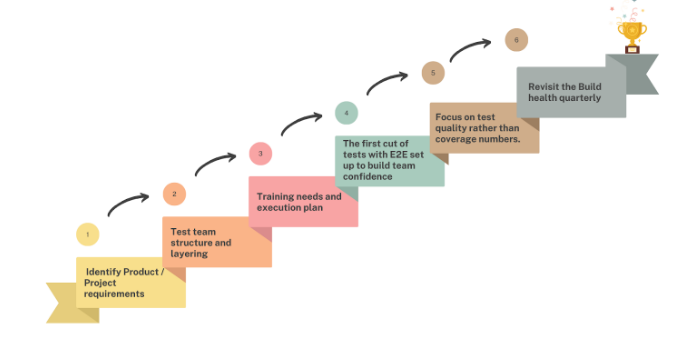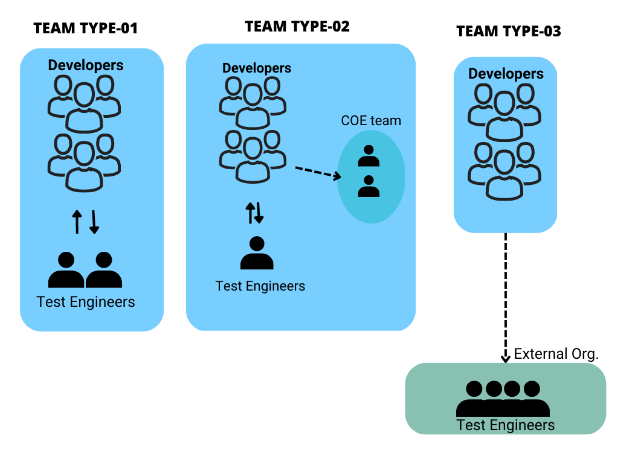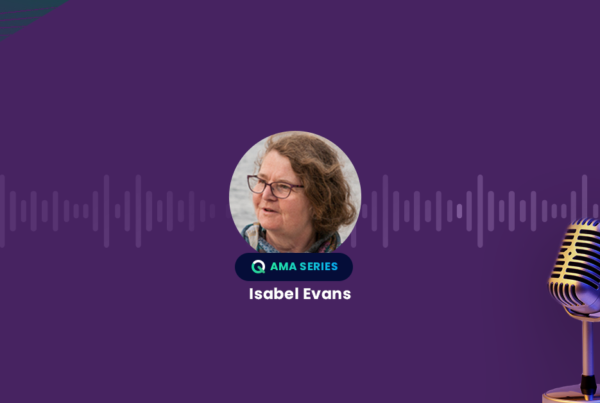Tips for easing the QA team towards test automation

Test automation is a vital part of a successful testing strategy due to the complexity and speed of current software development. Software testing can be made more effective by utilizing test automation, which offers a variety of benefits. The diversity of tools and automation frameworks available in the market overwhelms development teams taking small steps toward developing their test automation suite. Teams encounter "Which tool to choose?" as a china wall and find it difficult to overcome with a confident choice. Should we look for open-source frameworks and arrest the cost or invest in licensed products and achieve stable support?
Even if the team manages to select a tool and move forward with the implementation. The questions don't stop there; teams are then faced with increasingly difficult ones, including.
- Should we have separate test frameworks for the front end and back end?
- Should the test code reside in the application repository?
- Which assertion library to use?
- How do we upskill all relevant resources?
- How do we handle complex integration scenarios? etc
In this article let us discuss how you can assist your team in easing into test automation by taking one step at a time.

Step 1: Identify Product / Project requirements
Test engineers working on the product development setup are coupled with the application with a long-run objective, as and when the application matures, it gets complex with intricate details, for example Enterprise applications. In managed services firms, test engineers are assigned to a specific customer project, and the team is disbanded after the project goal is met, for example, partnership development. Team members must comprehend the aim from the perspective of the overall deliverables because this will help them to clearly define the specifics of the kind of tool they should be considering.
Enterprise applications have long-run developments and get deeply complex when the application grows, whereas limited implementation projects, like a content website for a client or a simple payment portal etc, have limited features with foreseeable features. Therefore, understanding the nature and need of the solution should be the basis for all further decisions.
Step 2: Test team structure and layering
The team structure plays a very important role when it comes to testing automation, not many see through the impact effectively. Depending on the size and working setup of the organization, the team set up varies, and so are the accountability of team members.

Team structures aid in establishing clear parameters for action items and a sense of accountability within the team. Team members can discover the answers to queries like
- Who is in charge of generating fresh test scripts, and how frequently?
- Which approach should we use: delayed test automation or in-sprint test automation?
- Who is responsible for its consistent execution and failure repair?
Step 3: Training needs and execution plan(Budget, time, resources, etc)
If step two is carried out successfully, it will become clear who is on the team implementing the test automation. Recognizing the team's existing talents and any new ones that need to be learned would be the next step in the process. Absolutely, I support on-the-job training, but it works best for individuals who are dedicated to developing test automation scripts because they will have an unwavering focus on doing so. Scrum test engineers will need to perform testing tasks in addition to developing test scripts; this generally increases pressure and deters motivation for creating and maintaining effective scripts.
If you have a dedicated team of test engineers, move directly into the implementation phase; if not, schedule a brief training period to ramp up your test engineers while clearly stating the expectations.
Step 4: The first cut of tests with E2E set up to build team confidence
Use a logical code cut to set a fixed target rather than a moving target when starting the test automation from scratch. Keep a record of the test code's Dos and Don'ts, including the best practices for code merges and test executions. Find the less complicated yet effective tests to automate in the first iteration. This helps to build teams’ confidence in their work and motivates them to pick up more complex scenarios in further iterations.
Take the help of a Kanban board and list out all the open tickets that need to be worked on. Let your test engineers choose the scenarios for which they want to create tests and regroup frequently to evaluate automation progress. If the test engineering team is large enough (for example, Enterprise set up), encourage test engineers to perform 4-eye through code reviews and peer reviews.
Step 5: Focus on test quality rather than coverage numbers.
Volume speaks numbers but not quality; guide your team to focus on weaving a safety net around the most critical part of your application. Doing so automatically lefts the overall test quality as the test automation is focused on the most painful parts of the application. Risk-based scenario identification is one of the several ways to mark the critical functional flows of an application.
Step 6: Revisit the Build health quarterly
Test automation's primary goal is to use a left-shift test approach in order to cut down on time spent on repetitive chores and tests. The critical juncture for test results is when the PRs are merged; stable tests produce reliable results and enable a rapid feedback cycle. It's crucial for test engineers to evaluate test automation performance at least once every quarter. The history accumulated over time can provide insight into the general performance of the application and test. The team should now consider issues such as optimizing build efficiency, stopping inconsistent testing, overall coverage, etc.
Step 7: Documentation
Although documentation is generally despised, it is the most important component of every organization. As long-lasting teams are extremely uncommon, the only means for a manager to guarantee a seamless transfer of resources is through good documentation. Encourage the test engineering team to document every piece of test automation that has been implemented once the team has gained momentum.
The last, but certainly not the least, is to recognize and celebrate the accomplishments of the team and its ongoing work to cultivate a quality mindset.
Related Posts
 QCommunity Talks with Isabel Evans-“The notion of quality and the notion of failure”
QCommunity Talks with Isabel Evans-“The notion of quality and the notion of failure”
QCommunity Talks with Isabel Evans-“The notion of quality and the notion of failure”
 Does The Test Pyramid Maintain Its Relevance Today?
Does The Test Pyramid Maintain Its Relevance Today?



































